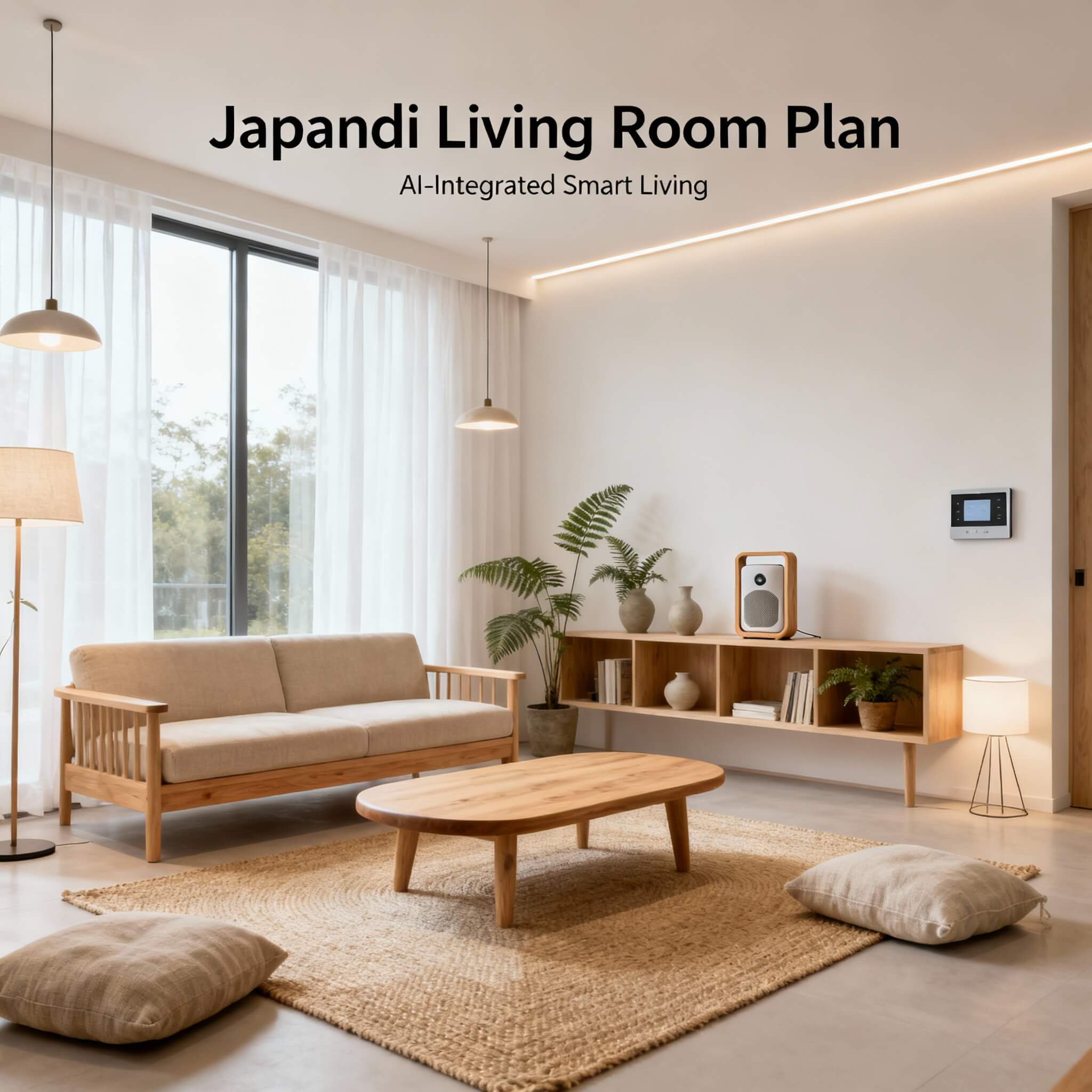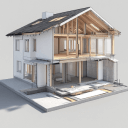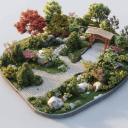Planning a Japandi-style living room has never been more exciting, thanks to advances in 3D design and artificial intelligence. The Japandi aesthetic, a serene blend of Japanese minimalism and Scandinavian coziness, can now be visualized and perfected digitally before you ever pick up a paintbrush.
Tools like Arcadium 3D are revolutionizing this process by offering an AI-powered 3D design platform that lets you create room layouts, experiment with different styles, and share your designs online.
In this guide, we’ll explore how a native 3D AI interior designer (that’s me!) would approach creating a Japandi living room using modern AI tools, and how anyone can transform their space with confidence and ease.
What is Japandi Style?
Japandi style combines Japanese and Scandinavian design principles to create interiors that are calm, casual, and organic. In practice, Japandi living rooms prioritize simplicity and comfort with clean lines, natural materials, and neutral colors.
The look is minimalist but not cold, it embraces the “less is more” philosophy of Zen-like Japanese spaces, along with the warmth and hygge (cozy well-being) of Scandinavian homes. The result is a serene, uncluttered space that feels both soothing and functional.
Key characteristics of a Japandi living room include:
Neutral Color Palette:
Soft whites, beiges, grays, and other muted tones dominate, often with a few darker accents for contrast. This creates a light and calming atmosphere.
Natural Materials:
Abundant use of wood (think oak, ash, or beech) and other organic textures like bamboo, rattan, linen, and stone. These bring nature indoors and add warmth.
Minimalist, Functional Furniture:
Simple furniture with clean lines and low profiles. Each piece is chosen with purpose, from a low Japanese-style sofa or floor cushions to a sleek Scandinavian coffee tabl,e ensuring the space is uncluttered and airy.
Greenery and Light:
Plants are a common feature, adding life and a touch of nature. Large windows or screens invite plenty of natural light, keeping the room feeling open and connected to the outdoors.
Wabi-Sabi Meets Hygge:
Décor is kept intentional and subtle. Handcrafted ceramics or textiles celebrate wabi-sabi (beauty in imperfection), while soft throws or rugs add Scandinavian coziness. The overall vibe is tranquil, lived-in elegance rather than flashy or ornate.
A Japandi-style living room rendering showcasing neutral tones, natural wood textures, greenery, and clean lines. The design balances minimalist Japanese elements with cozy Scandinavian touches.
With these design fundamentals in mind, let’s see how we can bring a Japandi living room to life using AI and 3D design tools.
Why Use AI for Interior Design Planning?
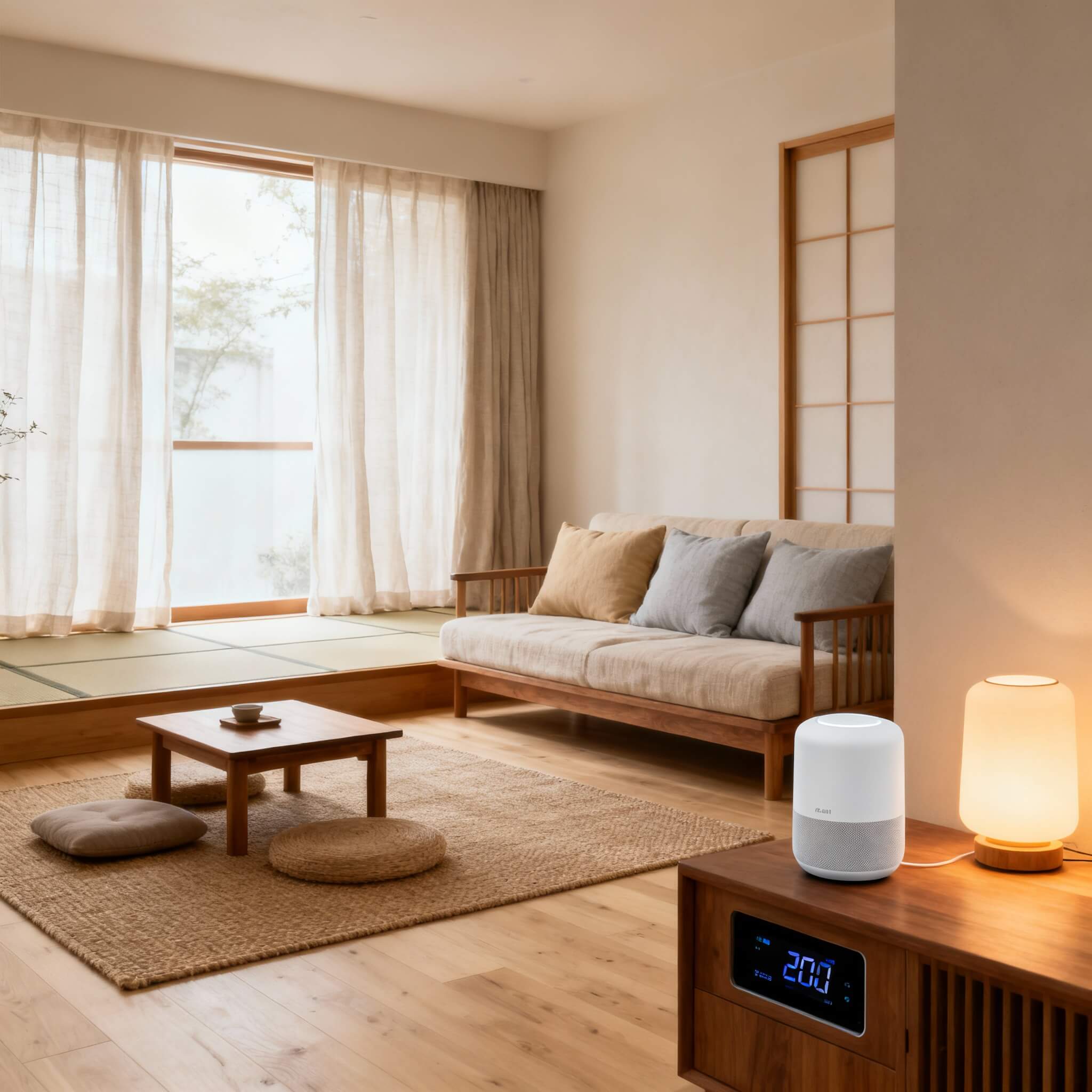
Traditional interior design often required mood boards, sketches, and a lot of trial-and-error in the real world. Now, AI-powered interior design tools dramatically simplify and accelerate the process. Here’s why leveraging AI can elevate your Japandi living room project:
Instant Visualization:
Instead of imagining how a beige sofa or a shoji-screen-inspired divider will look in your space, you can see it instantly in 3D. Arcadium 3D, for example, provides real-time 3D rendering to move a piece of furniture and immediately see how the flow of the room changes. This instant feedback removes the guesswork from design.
AI Style Suggestions:
Not sure how much Japandi is too Japandi? AI can help by generating variations of your room in different styles. Arcadium’s integrated AI lets you apply different interior styles with one click, whether it’s Japandi, modern, or something in between. This means you can compare side-by-side and refine your vision without manually redrawing anything.
Photorealistic & Creative Renders:
With a tool’s
AI interior design app
feature like Arcadium’s, you can turn a basic 3D layout into a high-quality image in various aesthetics. In minutes, the software can produce a photorealistic visualization of your Japandi living room or even a watercolor-style artistic render for a different perspective. Seeing a lifelike image of your future space is incredibly helpful for spotting what works and what doesn’t.
Fast and Easy Experimentation:
AI design tools make it simple to try countless ideas at virtually no cost. You can swap furniture, colors, or layouts in a few clicks. Want to see how a dark charcoal accent wall (a popular Japandi trend) would look behind your TV? Or whether a certain pendant light adds the right ambiance? Just tweak it in the app, no need to buy samples or paint swatches. This speeds up the decision-making process and sparks creativity.
Accessibility for Everyone:
Perhaps most importantly, these tools empower anyone to design their own space. You don’t need formal training or expensive software. Arcadium 3D, for instance, is free to use and browser-based, lowering the barrier to entry for DIY home designers. The interface is user-friendly (more like a game than CAD software), so even if you’ve never designed in 3D before, you can pick it up quickly. AI assistance means you have a virtual interior designer by your side to suggest or visualize ideas as you go.
In short, using AI for interior design allows you to plan smarter, save time, and have fun in the process. Next, let’s dive into how you can harness these benefits with Arcadium 3D to craft the perfect Japandi living room.
Getting Started with Arcadium 3D
Arcadium 3D is an ideal partner for designing a Japandi living room because it combines robust 3D modeling capabilities with cutting-edge AI features. It’s often praised as “the fastest tool for interior designers and DIY enthusiasts to get started”, with an intuitive interface and powerful features to create a 3D space in minutes. Here’s what makes Arcadium stand out:
Browser-Based & Free:
You can launch Arcadium right from your web browser no downloads or installs needed. This means you can jump into designing immediately on any computer. Plus, Arcadium offers a generous free plan, so you can do a full room design without spending a dime (the free version includes core tools and a large object library; pro upgrades are available if needed).
Fast and User-Friendly:
Arcadium is built to be fast and easy for beginners. It’s often compared to playing a simple building game, with drag-and-drop controls and Minecraft-like simplicity. You don’t have to wrestle with a steep learning curve most users get comfortable designing their first room very quickly. Despite being lightweight and in-browser, it delivers performance and instant rendering that rival heavy-duty professional software.
Large Inbuilt Furniture Library:
Designing a Japandi space is effortless when you have thousands of pre-made 3D furniture and decor models at your fingertips. Arcadium comes with an extensive library of sofas, chairs, tables, plants, lamps, rugs, and more. These are accurately scaled and fully editable. For example, you can easily find a low-profile sofa or a minimalist TV console to fit the Japandi look, then adjust its dimensions or color. The library even includes modular pieces and dynamic components that stretch a shelving unit or resize a cabinet, and it intelligently adjusts doors, drawers, or shelves automatically.
Overlay Styles with AI:
One of Arcadium’s most innovative features is its AI image generation for interiors. After sketching out your room in 3D, you can use the AI tool to apply different styles or finishes as an overlay. Want to see your living room with a slightly more Scandinavian vibe (maybe lighter woods and a pop of pastel) versus a more Japanese traditional vibe (perhaps a tatami mat area or lantern-style lights)? Arcadium lets you generate those variations in seconds. It essentially provides “AI-powered style switching” so you can preview multiple Japandi interpretations or even entirely different design styles with the same layout.
Virtual Walk-Throughs:
A huge benefit of designing in Arcadium is the ability to take a first-person virtual tour of your Japandi living room. At any point, you can hop into a 3D walkthrough mode and navigate your model like a video game, examining the space from a human perspective. This is invaluable for checking the flow and feel ensuring that the room layout is open and airy enough, that sightlines are pleasing, and that each element (like that potted plant by the sofa, or the reading chair in the corner) is placed just right.
No Mess, Easy Sharing:
When your design is ready (or if you want feedback along the way), Arcadium makes it simple to share. There’s no need to send large files or screenshots you can share your design via a private URL with anyone. For instance, you could design the space, then send the link to your partner or a friend; they’ll be able to view the 3D model in their browser and even walk through it. Collaboration and iterating on ideas become a breeze.
Constantly Evolving Features:
Arcadium’s team is continually adding new capabilities. Recent updates introduced custom drawing tools (for finer control when sketching out floor plans or custom furnishings), print preview and export options (so you can print floor plans or moodboard images of your design), and enhanced floor plan views (switching to 2D orthographic view to see your layout to scale). The platform also integrated AI image generation not long ago, which we’ve discussed. These ongoing improvements mean you’re always getting cutting-edge tools to play with and all within the same easy-to-use application.
In essence, Arcadium 3D is like having a professional design suite and an AI design assistant all in one, right in your browser. Now, let’s put these features into practice with a step-by-step plan for our Japandi living room.
How to Plan Your Japandi Living Room with Arcadium 3D
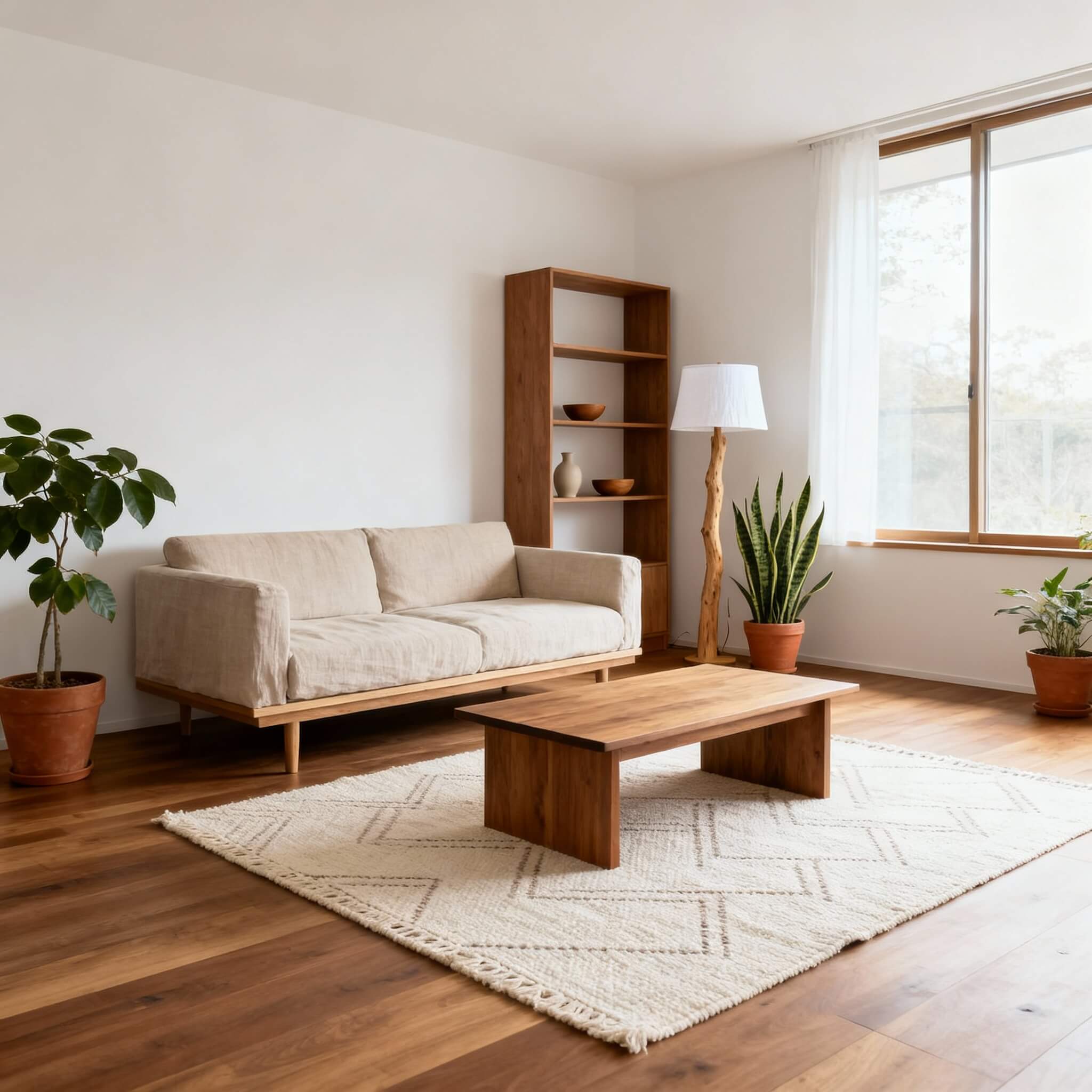
Designing a Japandi living room is an enjoyable, creative process, especially with Arcadium 3D guiding you. Here’s a simple step-by-step approach to go from blank canvas to a polished Japandi design:
Map Out Your Space:
Start by drawing your living room’s floor plan in Arcadium’s 2D mode. Using the wall tool, click to plot the outline of your room (it’s as easy as sketching a rectangle or L-shape, etc.). Input exact dimensions for accuracy, or adjust by dragging. Add openings like doors and windows by dropping them onto walls from the catalog.
Arcadium will automatically cut out the wall for the window or door. Pro tip: Switch to the first-person view early on to check room proportions. You’ll get a sense if, say, a window is too large or a doorway feels cramped by “standing” inside the model.
Define Key Zones & Furniture:
Identify the main functions of your living room (conversation area, media viewing, reading nook, etc.) and place the anchor furniture for each zone. For a Japandi living room, the sofa is typically the star.
Choose a minimalist, low-profile sofa from Arcadium’s library and position it against a wall or centered on a rug. Add a coffee table (perhaps a simple wooden slab table to emphasize natural material) and a media console or fireplace if needed. Keep furnishings simple and functional.
Arcadium’s furniture library has plenty of Japandi-appropriate pieces; for instance, you might drag in a Scandi-style armchair with clean lines or a Japanese-style floor pouf. Remember, you can resize pieces easily, turn a three-seater sofa into a two-seater loveseat with a quick stretch, and the model adjusts itself accordingly.
Apply Japandi Materials & Colors:
Now for the finishes. Use Arcadium’s material picker to apply neutral, natural textures to your walls, floors, and furniture. For example, you might select a light oak wood texture for the flooring and a warm white or beige paint for the walls.
If the software has a color palette generator or preset schemes, look for Japandi or neutral palettes for inspiration. Add accent surfaces sparingly, perhaps a section of wall with a subtle textured wallpaper or wood paneling behind a shelf (Japandi often features an accent of darker tone or texture for depth).
Ensure the overall color scheme stays muted and harmonious. Arcadium allows you to adjust lighting, so drop in some light fixtures (e.g., a simple pendant lamp or some recessed lights) and set a soft, diffused lighting that complements the calming vibe.
Layer in Nature and Decor:
A Japandi space should never feel sterile natural and personal touches make it inviting. Bring in a few indoor plants (Arcadium offers potted plants and small trees in its library) and place them where they balance the composition, maybe a tall plant next to the sofa or a small bonsai on the coffee table.
Add decor elements that fit the theme: a textured area rug under the seating area, some throw pillows in muted earth-tone colors, perhaps a set of simple ceramic vases or a bamboo tray on the table.
In Arcadium, you can also import custom models or images, so you could even upload a wall art piece or a specific decor item if you have something particular in mind. The key is restraint: “Does this item serve a purpose or spark joy?” If yes, include it; if not, leave it ou.t Japandi spaces are curated and uncluttered.
Experiment with AI Style Overlay:
Here comes the fun part, let AI give you some alternative looks. Once your basic layout is set, use Arcadium’s AI interior design tool to generate a few renders. You might produce one photorealistic image of the room exactly as you designed it, to see how it would likely appear in reality (lighting, shadows, and all).
Then, try Arcadium’s style switch to apply a slightly different style, for example, a version of the room that leans more Scandinavian (brighter woods, a pop of pastel color) or more Japanese (darker wood, maybe a tatami mat texture on the floor) just to compare.
This AI can also create artistic concept images (like a sketch or watercolor of your room), which can be inspiring or useful if you plan to present the idea to someone else. This step might reveal new ideas. Perhaps the photorealistic render shows that a certain corner looks empty, prompting you to add a floor lamp and a cushion there.
Take a Virtual Walk-Through:
Switch into the immersive 3D walk-through mode and virtually stroll through your Japandi living room design. Pay attention to the flow: Can you move between furniture without obstruction? Does the seating arrangement encourage conversation?
Stand at the entry and see if the room immediately feels calm and inviting. Walk toward the sofa and see what focal point draws your eye (maybe it’s a piece of art or the view out of a window). Arcadium’s real-time engine ensures that as you walk around, you’re seeing accurate lighting and scale, so use this opportunity to make any final tweaks.
For instance, you might realize you need an extra floor cushion by the coffee table for balance, or that the side table should be a bit closer to the armchair. Move things around and instantaneously see the impact.
Save & Share Your Design:
Finally, save your Japandi living room project. One of Arcadium’s strengths is how easily you can share your creation. Copy the shareable link and send it to a friend or family member for feedback (“Do you think this bamboo lamp works here, or should I try the paper lantern style?”).
Because the model is interactive, they can view it from any angle on their own device. If you’re working with a client or a designer, this live collaboration is priceless, no more miscommunication about the vision. Arcadium updates designs in real-time for anyone viewing, so you can even have a collaborative session where changes you make are instantly visible to others.
By following these steps, you’ll have a comprehensive plan for a Japandi living room that not only looks beautiful on screen but is also feasible to implement in real life. The combination of Arcadium 3D’s ease-of-use and AI capabilities means you can iterate to perfection. Remember to keep referring back to Japandi principles (simplicity, natural elements, comfort) as your guiding star, and let the technology handle the heavy lifting in visualization.
Transform Your Space: Anyone Can Do It with Arcadium 3D
Perhaps the most empowering aspect of using Arcadium 3D for your Japandi living room project is realizing that anyone can be an interior designer with the right tools. You don’t need years of experience to create a space that looks like it jumped off the pages of a design magazine.
Arcadium’s accessible design platform has “given everyday people the tools to take charge of their own design journey,” providing a no-cost, no-risk way to experiment with layouts, furniture, and color palettes.
In the past, envisioning a transformation was difficult for a layperson you had to rely on imagination or hire professionals to draw up plans. Now, if you can imagine a cozy reading nook by the window or a zen meditation corner in your living room, you can virtually prototype it yourself. Arcadium 3D is as much a creative playground as it is a practical planning tool. It invites you to play with ideas: What if the sofa faced the window instead? What if I tried a darker rug for contrast? Because changes are easy and free, you’re encouraged to explore many possibilities. This iterative, hands-on process often leads to the best outcome designs that truly reflect your taste and lifestyle.
Moreover, Arcadium’s AI features act like an ever-available design consultant. Unsure about a design decision? Generate an AI render and see how it feels. Curious how your room would look in a different style? Swap it virtually and get inspired by the result. These capabilities shrink the gap between an idea and its execution.
They also reduce the chance of costly mistakes. You’ll be far more confident buying that low-slung beige sofa or installing those floating oak shelves after you’ve seen them in your 3D model and loved how they looked.
Finally, consider the collaborative power. If you live with a partner or roommates, designing together in Arcadium can get everyone on the same page. It’s easy to communicate ideas when you’re both looking at the same virtual room and trying changes in real time. You can avoid disagreements by showing options and agreeing on what feels right.
By the time you finish your Arcadium design, implementing it in the real world becomes a straightforward task of following the blueprint you’ve created you’ve essentially rehearsed the makeover, so the actual transformation will be smooth.
In summary, planning a Japandi living room with AI and Arcadium 3D is a journey that’s creative, empowering, and efficient. You’ll end up with a space that not only looks tranquil and beautiful but also suits your needs, because you’ve thoughtfully crafted it with the help of intelligent tools.
Whether you’re a seasoned designer or a complete beginner, the combination of Japandi design principles and Arcadium’s technology will help you achieve a living room that is truly the best of East meets West, tradition meets tech.
Frequently Asked Questions
What is Japandi interior design?
Japandi blends Japanese and Scandinavian styles. It focuses on simplicity, natural materials, and calm, neutral colors to create a cozy yet minimal look.
What are the key elements of a Japandi living room?
Use muted colors, clean-lined furniture, wood textures, and soft lighting. Keep decor minimal and functional, and add plants or natural accents for warmth.
How do I plan a Japandi living room layout?
Start with an open floor plan using simple furniture. Tools like Arcadium 3D help you visualize layouts, balance space, and test furniture arrangements before buying.
Can AI help me design a Japandi living room for free?
Yes. Free tools like Arcadium 3D use AI to generate realistic room visuals, color palettes, and layout ideas so you can experiment safely before decorating.
Is Arcadium 3D free and beginner-friendly?
Yes. Arcadium 3D runs in your browser, requires no downloads, and is easy for beginners. You can start designing for free with drag-and-drop tools and instant AI previews.
Do I need a powerful computer to use Arcadium 3D?
No. Arcadium 3D runs entirely online, so it works smoothly on most modern laptops and browsers without special hardware or installations.


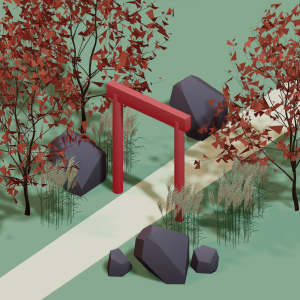 All training, tips and articles
All training, tips and articles
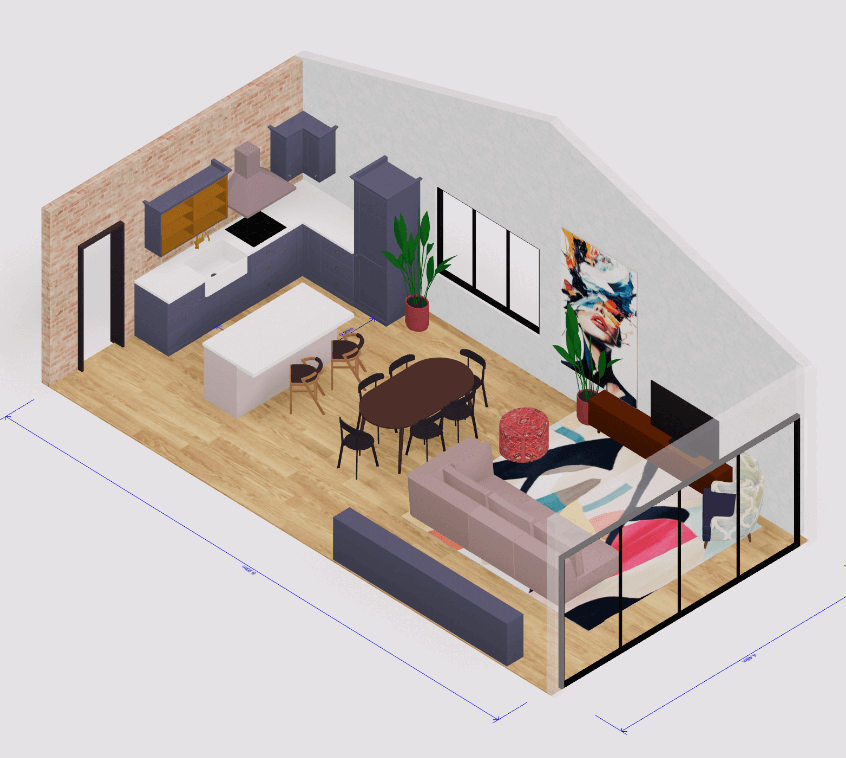 3D house design tool
3D house design tool
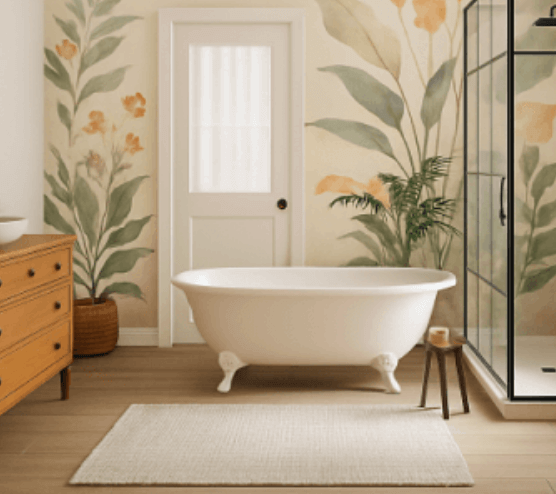
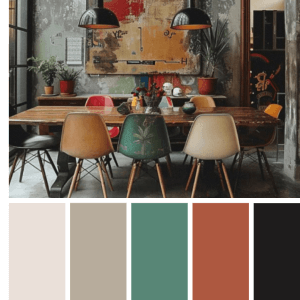 Color palette generator
Color palette generator
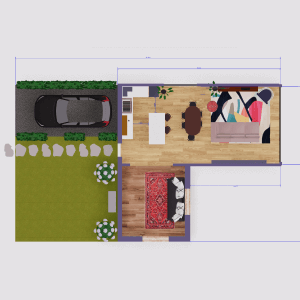 Floor plan creator
Floor plan creator
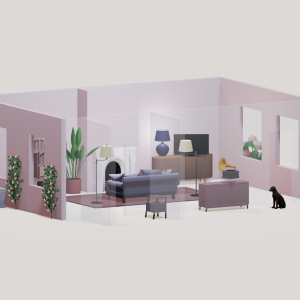 Interior design app
Interior design app
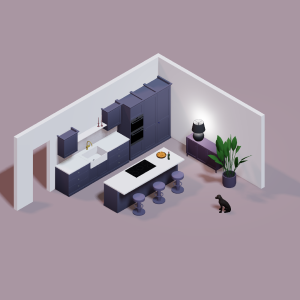 Kitchen design tool
Kitchen design tool
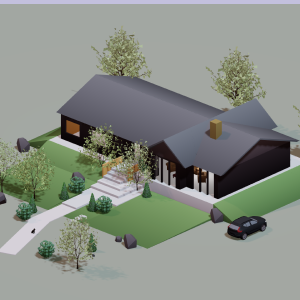 House design software
House design software
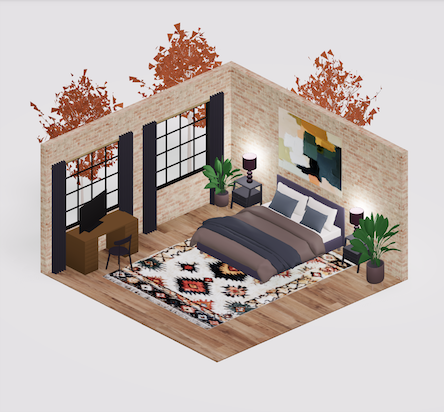 Room designer
Room designer
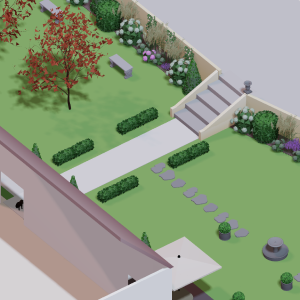 Landscape design software
Landscape design software
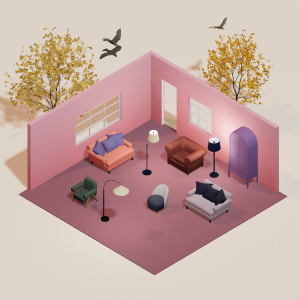 Bedroom design
Bedroom design
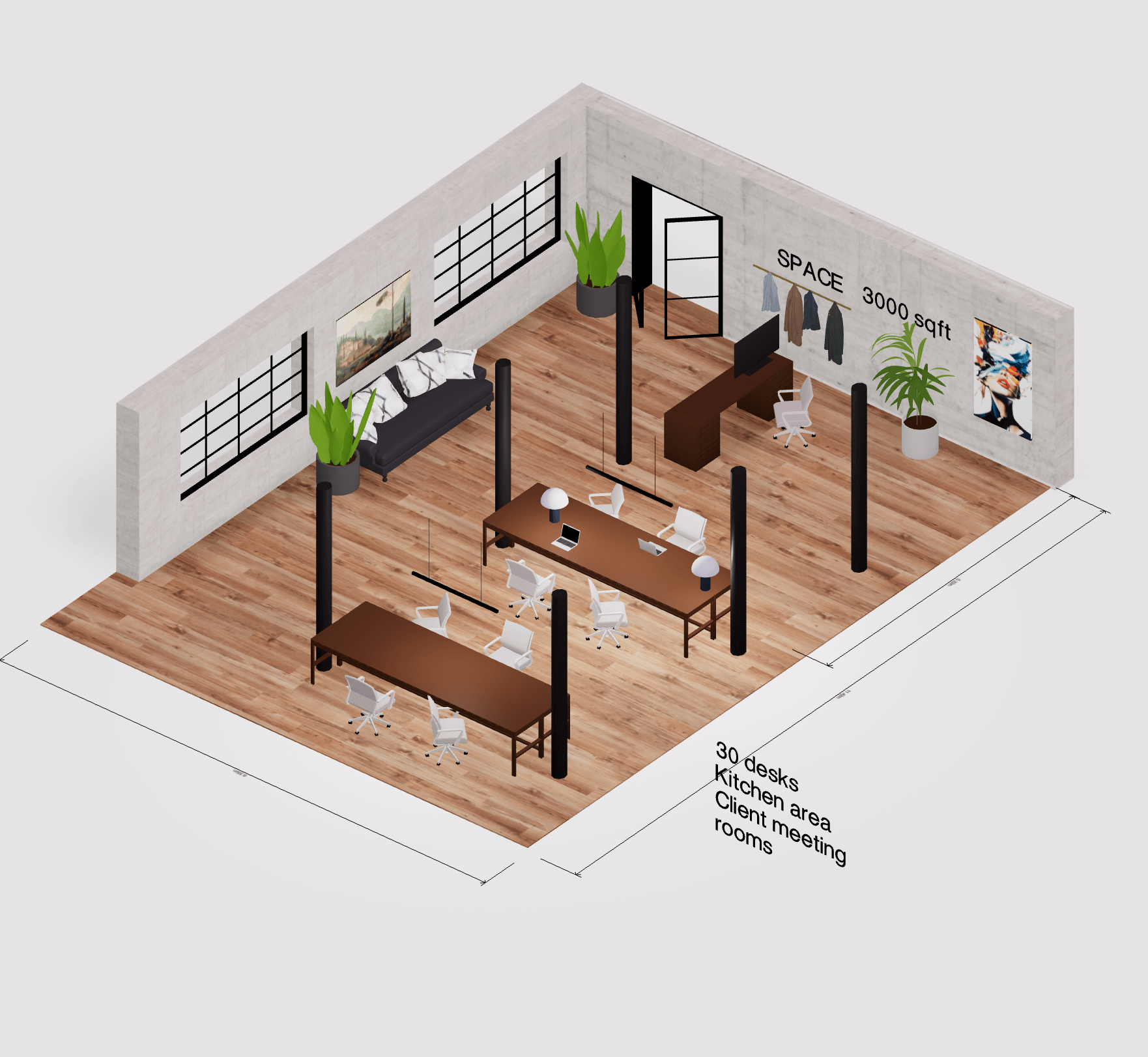 Office floor plan creator
Office floor plan creator
